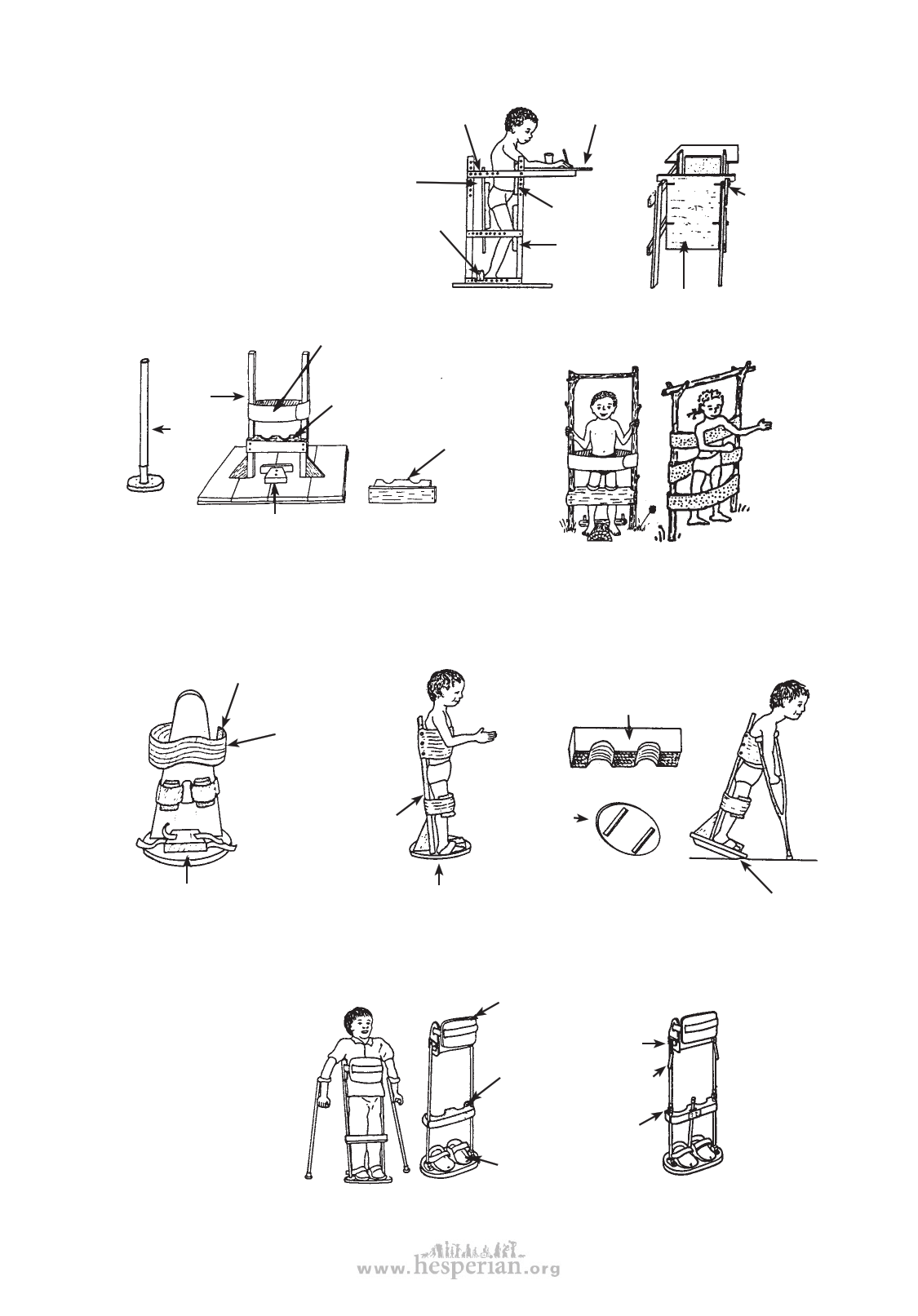
DEVELOPMENTAL AIDS
STANDING FRAMES
These are mainly for a
child with contractures
or painful joints who has
difficulty standing straight.
The child can gradually be
straightened up.
bolt or pin for
adjustment
adjustable
padded hip
support
adjustable
padded ankle-
foot support
ADJUSTABLE MODEL
table back view
chest
pad
knee
pad
bolts or
pins for
adjustment
MOVABLE MODEL
Uprights
can be
made of
wood
or metal
tubing.
wide belt of thick
cloth with Velcro
or strap adjustment
adjustable board with
padded notches for knees
The notched
part can
be made of
foam plastic.
adjustable foot support
Remove backboard to
stand child in frame.
SIMPLE FIXED MODEL
For some
children,
a chest
belt will
also be
needed.
STANDING-AND-WALKING FRAME
This is a useful aid to begin standing and walking, for children paralyzed or severely
affected below the waist (paraplegia, spina bifida, diplegic cerebral palsy).
Velcro
or other
fastener
chest strap
Instead of kneepads, you can
hold the knees better using a firm
knee support molded from stiff-
foam plastic or many layers of
cardboard glued together.
A hip band may
also be needed.
The back-board should
tilt back slightly
to let the child
stand straight up.
The base is
oval with the
longer dimension
sideways.
foot positioning
block and straps
STANDING-WALKING BRACE
For standing only,
use a flat base.
For walking, add runners with a curved
front. This makes it easier for the child
to tilt forward and lift off.
This has the same
use as the
standing-walking
frame above, but is
especially useful
for children who
need to learn
how to walk before
they are fitted for
braces with a hip
band or body brace.
DESIGN THAT DOES
NOT ALLOW SITTING
front plate
(plastic or
thin metal,
well padded)
stiff
plastic
foam knee
support
foot
guide
DESIGN WITH HIP AND KNEE
HINGES TO ALLOW SITTING
hip
hinge
locking
handles
knee
hinge
(From
Physically
Handicapped
Children—A
Medical Atlas
For Teachers.)
575
disabled village children